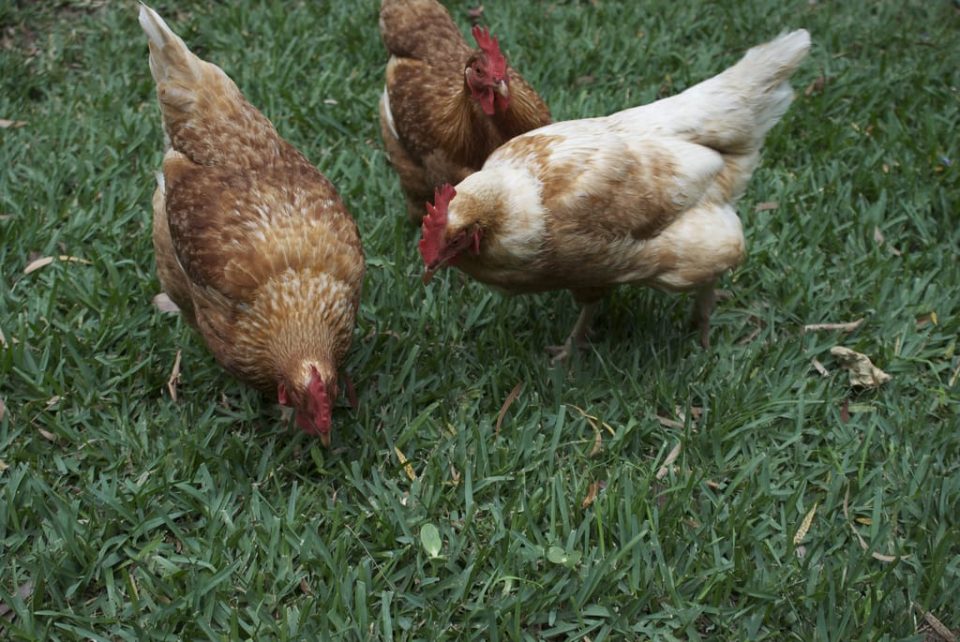INDIANAPOLIS (Inside Indiana Business) – Consumers across the country continue to feel the sticker shock when it comes to the price of eggs, but is there relief in sight? In December, the average cost of a dozen eggs was $4.25, compared to $1.79 a year prior, according to data from the Purdue University Center for Food Demand Analysis & Sustainability.
Rebecca Joniskan, president of the Indiana State Poultry Association says the industry, like others, is feeling the effects of inflation with higher feed and fertilizer costs, but the avian flu has had a particularly profound impact on the nation’s poultry flock over the past year.
“That has decreased the number of laying hens and thus, our supply of eggs,” she said.
While the avian flu has impacted turkey farms across Indiana, Joniskan said egg producers in the Hoosier State have been able to avoid the impact, thanks in large part to a concerted effort in biosecurity.
“You don’t want to expose the birds. So, our producers implement biosecurity every day, every time they come on and off their farms and enter that area within which they house their birds. So we we do that every day, regardless of the flu status.”
Sam Krouse, co-CEO of North Manchester-based MPS Egg Farms, said about 40 million hens nationwide have been wiped out by the avian flu.
He said his company, which has about 12 million hens in Indiana, Illinois and Texas, and produces about 250 million dozen eggs annually, has also implemented strict measures to avoid infection among its flocks.
“None of our farms have had avian influenza at any point,” Krouse said. “We wear specific uniforms that can help keep the birds safe. We monitor all the vehicle traffic that comes on and off the farm, down to the air inlets and different things that we can do to keep any other birds out of our hen houses, everything we can do to keep the diseases away from the birds and keep them safe. So that’s our number one priority going forward.”
Krouse said producers throughout the state learned a tough lesson about biosecurity in 2015 when the avian flu struck Indiana.
“Very few of the incidents of bird flu we’ve had [in Indiana] this year have been shown to be a connection between one farm and another. They’re almost all what we call point source introduction, where it’s one migratory bird flying over your house at the wrong time, and you happen to get the disease.”
Joniskan said trying to bring more egg-laying hens to farms is a long process, taking up to 30 weeks for a hatching chick to become a laying hen that will produce five to six eggs per week.
But supply costs for producers, particularly the cost of feed, have also affected the cost of eggs at the grocery store.
Joniskan said feed represents 60% to 80% of production costs for egg farmers.
“I know that Indiana’s corn and soybean farmers are aware that the cost is high, and that’s that’s making things challenging for us, and they’re doing all that they can,” she said. “The high cost of fertilizer is a challenge. That’s one of the significant inputs they’re looking at, as well as the cost of fuel.”
The cost of feed is also affected an increasing number of individuals who have begun raising chickens at home.
Shannon Cagle has been raising chickens for 15 years and currently has about 50 chickens at her home in Rush County. She says the feed she buys from her local grain elevator has gone up about 10 cents per pound over the last year.
“[That’s] a lot when you buy, you know, anywhere between 350 and 500 pounds for chicken feed at a time,” Cagle said. “I know the people who run my local grain elevator, and I trust them, and I trust the quality of their feeds. I have to assume that they’re passing on cost for their production such as the actual cost of grain, the cost of the supplements that we buy for layers, because we want to buy the highest quality feed for the highest quality eggs that we can produce.”
Cagle said she has seen increased interest from people looking into setting up their own chicken flocks at home, which has led to rising prices for chicks.
“I’ve had people ask me about my eggs that I just have at my house, what it’s like to raise chickens, what they should expect in terms of pricing. One of the interesting things that I’ve seen is that the availability of chicks, this is the time of the year that we find chicks at farm stores and find them online from various hatcheries around the country, they are selling out really fast. People are deciding that maybe now is the time for them to start their own backyard chicken operation.”
But Krouse believes some relief may be in sight in 2023. He said at its peak, the avian flu affected about 10% of the nation’s flock, but in January, that number fell to 5%.
Additionally, he said prices may have topped out at the end of December and are coming down steadily.
“So, if we look at wholesale markets for eggs, which tend to be a leading indicator of where eggs in the retail space are going, they have been coming down since the start of the year,” he said. “So, hopefully shoppers will start to see some relief at the shelf here in the next few weeks and certainly months.”
Cagle adds for folks who buy their eggs from local sources such as farmers markets, they might see some relief as the weather gets warmer.
“In the summertime, a lot of times you’ll see egg prices go down because chickens will eat whatever is out in their environment, you know, grass, bugs, those sorts of things, which means you frequently don’t have to supplement their feed so much, which means people are not paying their elevators or buying produced feed nearly as much,” she said. “I think sometimes people don’t realize how much a chicken eats in the wintertime when it can’t access its natural food sources.”

